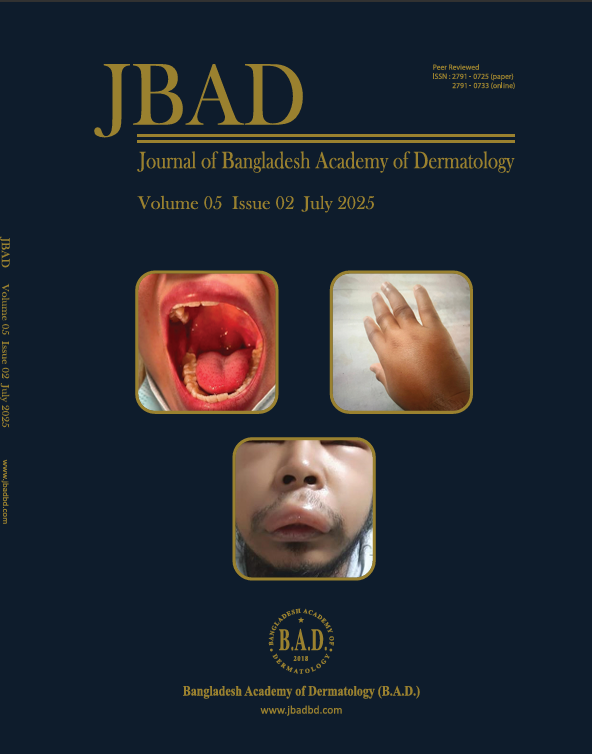Original Article
Comparison Of Outcome Between Tofacitinib and Baricitinib in Alopecia Areata: A Retrospective Observational Study
Author Details
1. Dr. Anzirun Nahar Asma, Associate Professor and Head , Department of Dermatology, Popular Medical College, Dhaka.
2. Prof. Md Mahabubur Rahaman, Professor, Dept. Of Dermatology, City Medical College, Gazipur, Dhaka.
3. Md. Mostaque MahmudAssociate Professor, Dermatology & Venereology, Bangabandhu Sheikh Mujib Medical University, Dhaka.
4. Professor Mohammad Asifuzzaman, Professor & Head, Dermatology, Green Life Medical College Hospital.
5. Dr. Md. Shah Zaman, Dermatology & Venereology, Assistant Professor, Z.H. Shikder Women's Medical College.
6. Dr Humaira Afreen, Assistant Professor, Sir Salimullah Medical College Mitford Hospital.
Abstract Introduction: Alopecia Areata is an immune-mediated, chronic inflammatory disorder that affects hair follicles, leading to nonscarring hair loss. Several treatment options are available, but none of them promise to cure. Recently, JAK inhibitors have been used as treatment options. Several studies provide data about the safety and efficacy of JAK inhibitors like Tofacitinib and Baricitinib. These drugs are also being used by dermatologists in Bangladesh. But to date, there is no published data about the comparison between Tofacitinib and Baricitinib in terms of safety and efficacy in our country. Objective: To compare the outcome of alopecia treatment with Tofacitinib and Baricitinib in terms of safety and efficacy. Methodology: In this retrospective observational study, 30 patients were included. Among them, 15 were administered Tofacitinib treatment, with 10 being female and 5 male. Where 15 patients received Baricitinib treatment, among which 8 were female and 7 male. Results: Both the Tofacitinib and Baricitinib groups exhibited positive responses, showing a mean improvement of 75.97% and 79.36% respectively. Despite a statistically significant difference, drawing conclusions is challenging due to the small sample size of this observational study. |
Keywords:

